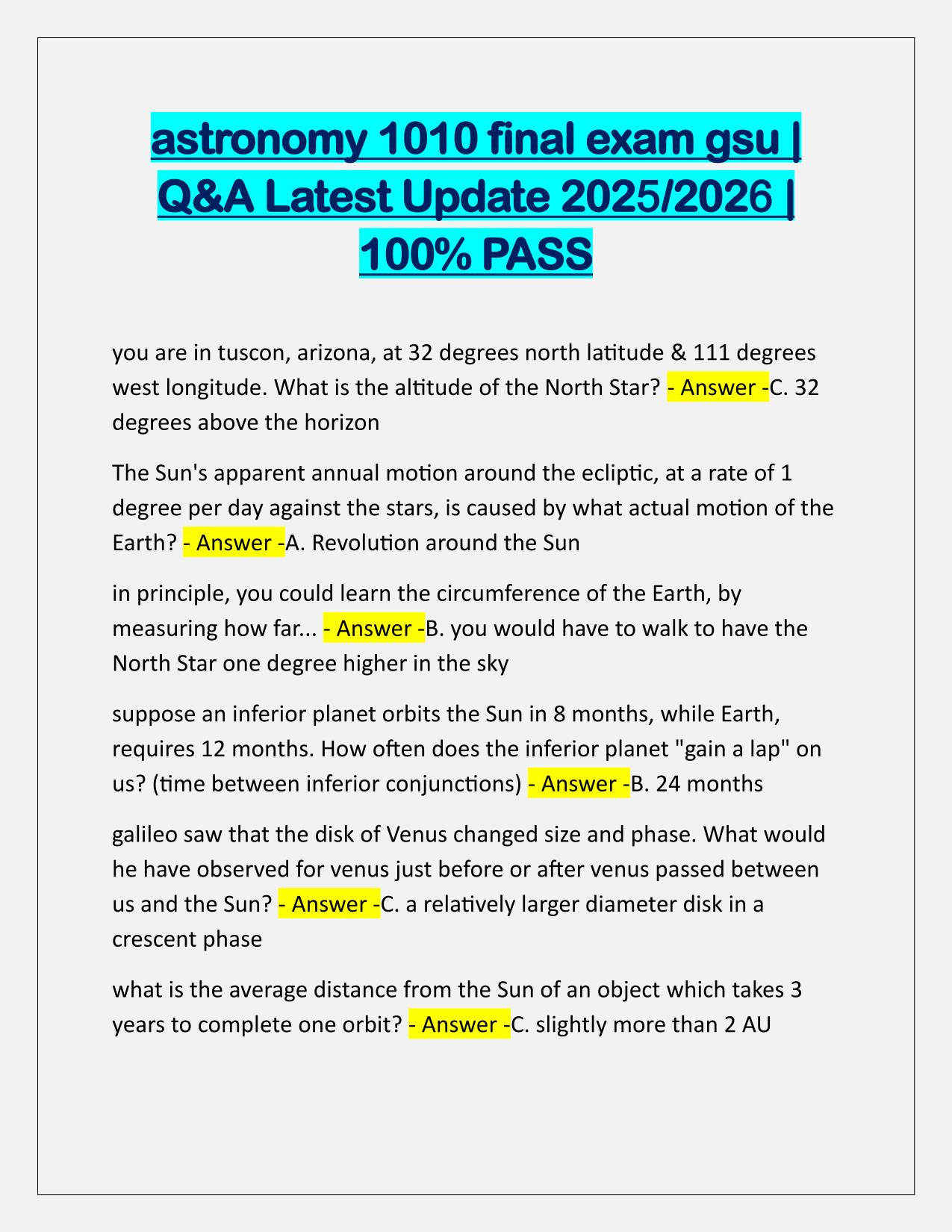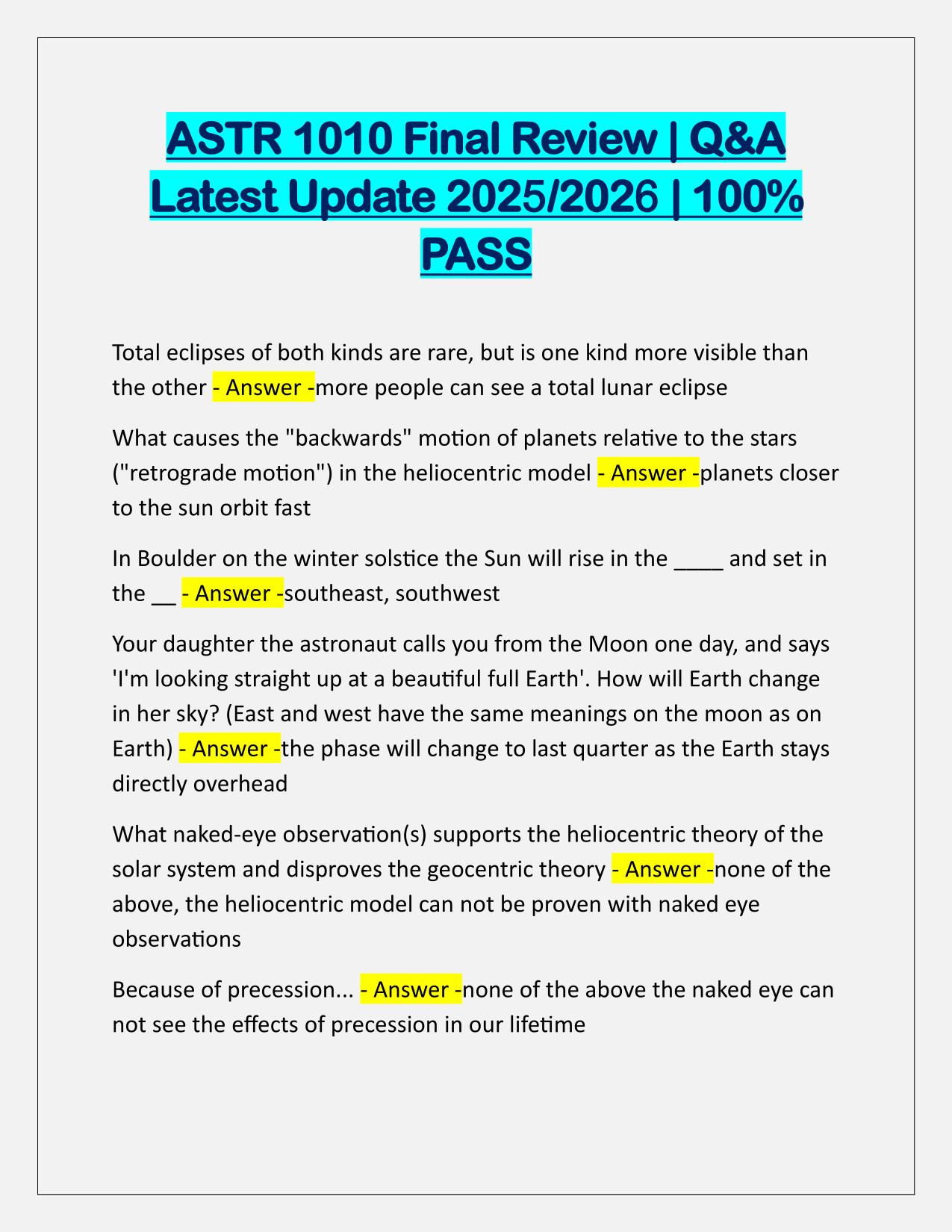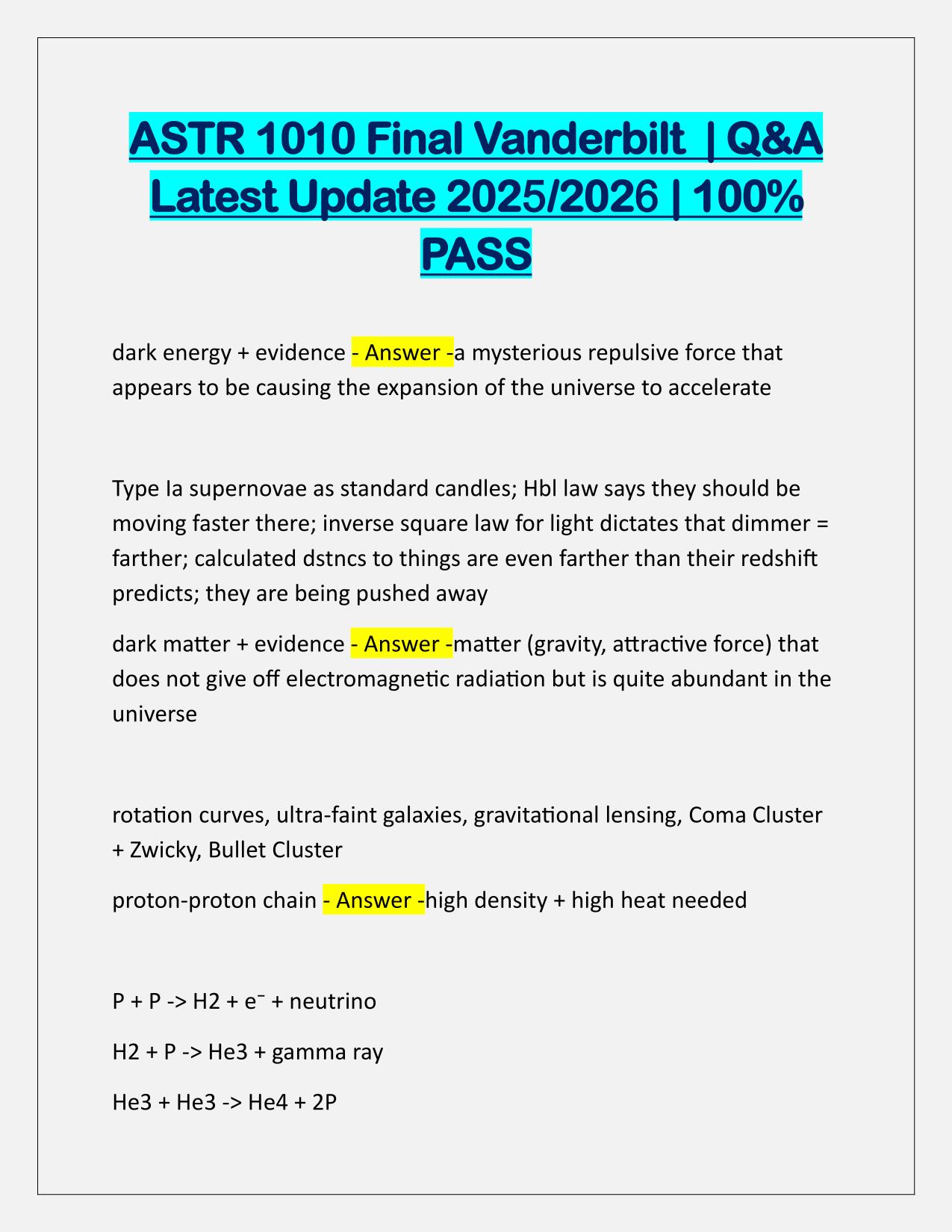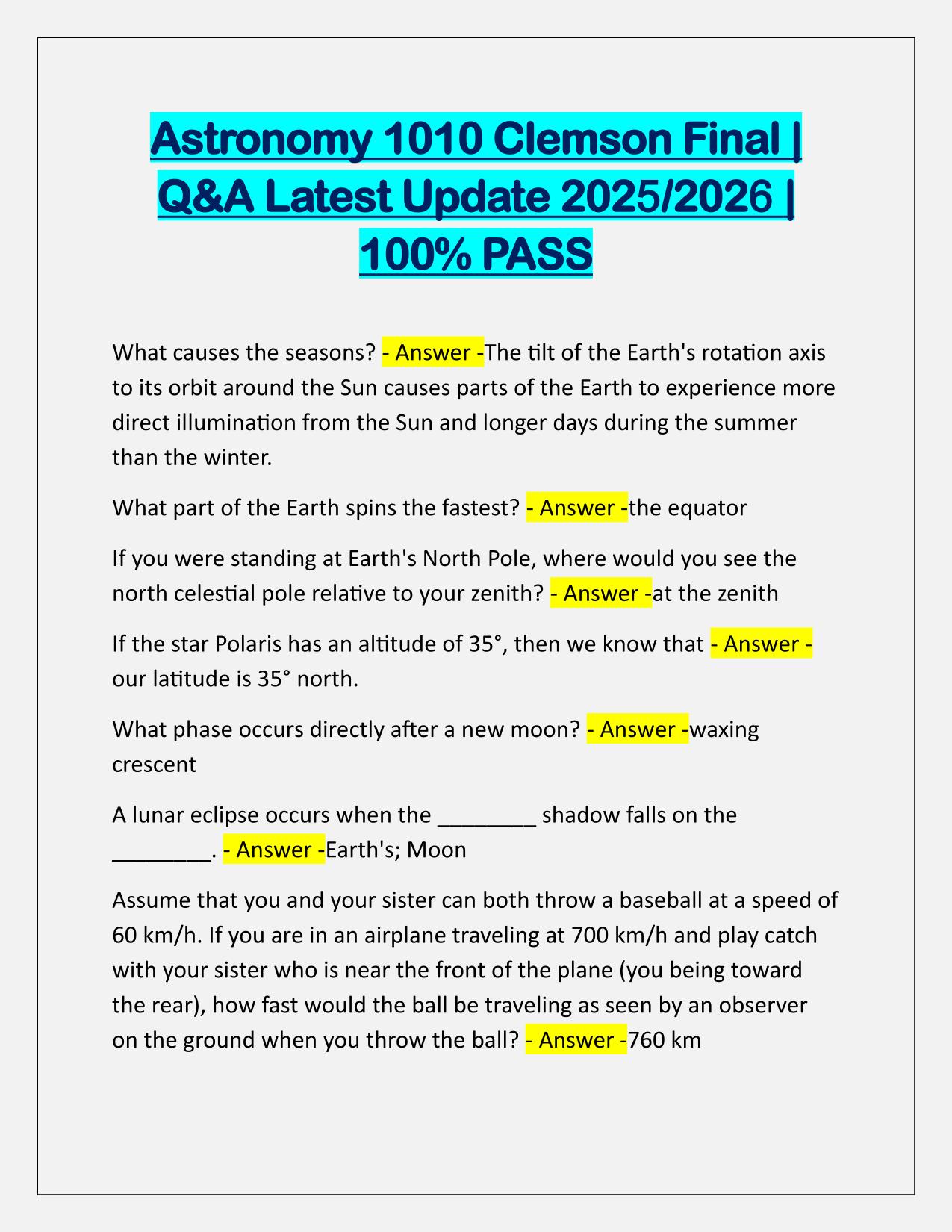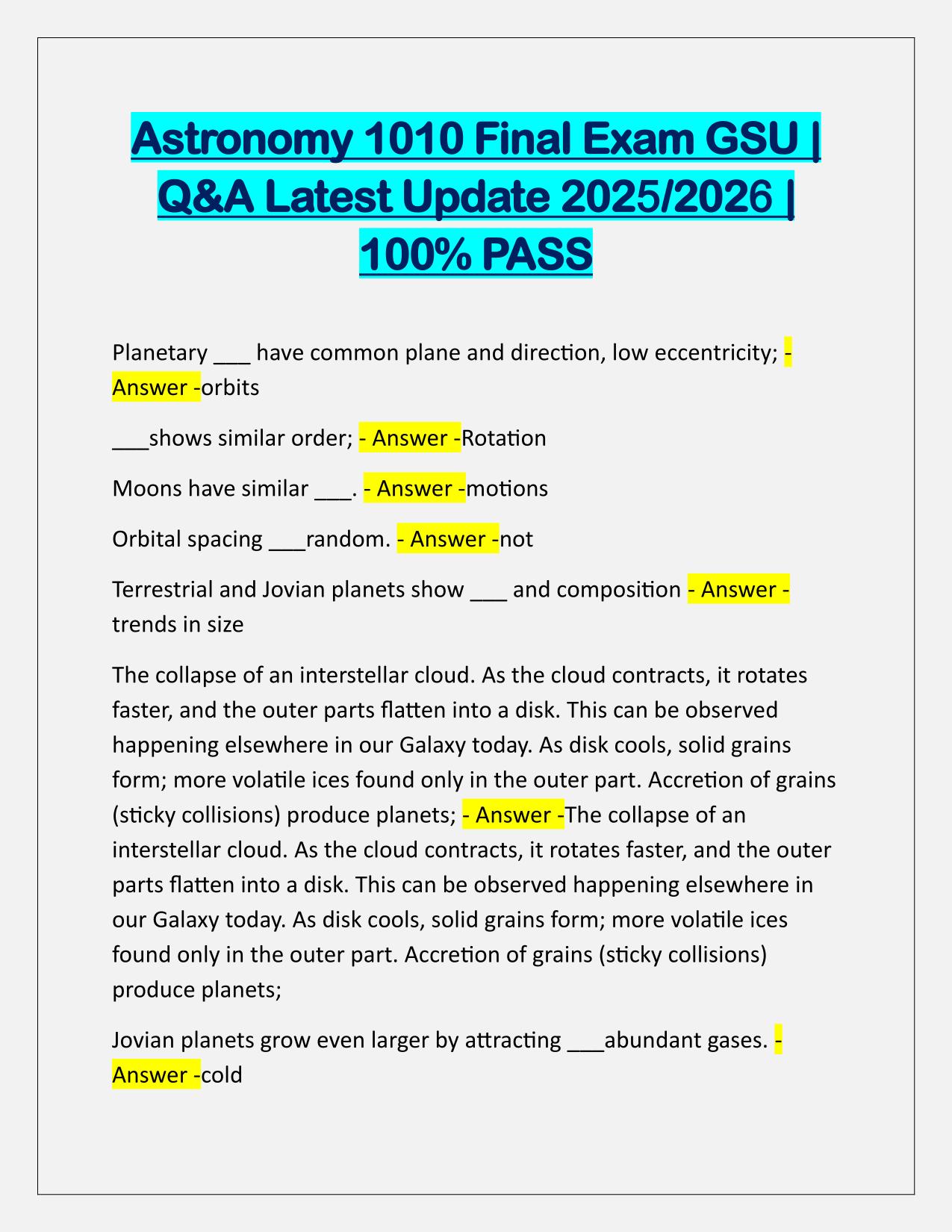Astronomy 1010 Final exam GSU Q&A Latest Update
Course:
Astronomy 1010
Institution:
Astronomy 1010
Astronomy 1010 Final exam GSU Q&A Latest Update
After purchase, you get:
✅ Instant PDF Download
✅ Verified answer explanations
✅ Refund if not Satisfied
✅ Prepared for 2025/2026 test cycle
Document Information
| Uploaded on: | May 12, 2025 |
| Last updated: | May 12, 2025 |
| Number of pages: | 5 |
| Written in: | 2025/2026 |
| Type: | Exam (elaborations) |
| Contains: | Questions & Answers |
| Tags: | Astronomy 1010 Final exam GSU Q&A Latest Update |
Seller Information

AdelineJean
User Reviews (0)
Exam (Elaborations)
$6.00
Bundle Deal! Get all 7 docs for just $15.00
Add to Cart
100% satisfaction guarantee
Refund Upon dissatisfaction
Immediately available after purchase
Available in Both online and PDF
$6.00
| 0 sold
Related Documents
Available in a Bundle
Content Preview
astronomy 1010 final exam gsu | Q&A Latest Update 2025/2026 | 100% PASS you are in tuscon, arizona, at 32 degrees north latitude & 111 degrees west longitude. What is the altitude of the North Star? - Answer -C. 32 degrees above the horizon The Sun's apparent annual motion around the ecliptic, at a rate of 1 degree per day against the stars, is caused by what actual motion of the Earth? - Answer -A. Revolution around the Sun in principle, you could learn the circumference of the Earth, by measuring how far... - Answer -B. you would have to walk to have the North Star one degree higher in the sky suppose an inferior planet orbits the Sun in 8 months, while Earth, requires 12 months. How often does the inferior planet "gain a lap" on us? (time between inferior conjunctions) - Answer -B. 24 months galileo saw that the disk of Venus changed size and phase. What would he have observed for venus just before or after venus passed between us and the Sun? - Answer -C. a relatively larger diameter disk in a crescent phase what is the average distance from the Sun of an object which takes 3 years to complete one orbit? - Answer -C. slightly more than 2 AU
